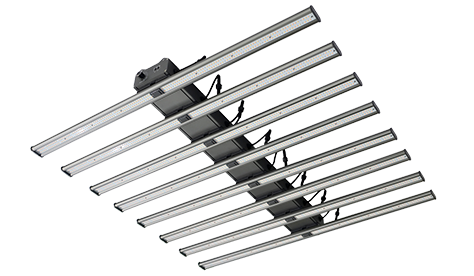Table of Contents
If you are about to invest in greenhouse growth, you must already know the value of light for your crops. Plant life forms a complex system of biological processes around solar signals. Greenhouse lighting fixtures will provide plants with the light needed for the chemical reactions necessary to promote photosynthesis, growth, and development in the absence of sunlight.
It is becoming increasingly important to the health and yield of crops.
Whether you decide to make a radical change with a new greenhouse LED grow light, stick with tried-and-true HPS lights, or make some efficiency upgrades to your current crop lighting, read on.
Here, we provide a guide to greenhouse lighting fixtures that creates the best greenhouse climate for your crops.

Do You Need Grow Lights in A Greenhouse?
Growing in a greenhouse protects crops from climate instability. At the same time, it protects them from animals, birds, and pests that damage young plants. Yet another disadvantage, the plants are hardly exposed to direct light.
There are many different types of greenhouses on the market today. They can be made of plastic, glass, or polycarbonate, all in a structure consisting of transparent walls and a roof. Their construction features allow sunlight to penetrate into the room, but free access to non-direct contact natural light. Farmers who grow low-light crops are keen to rely on natural light and they do not consider putting artificial light in greenhouse.
If you have a winter growing plan, you need a greenhouse lighting system. Designed to meet the spectral needs of plants at all stages of growth, it is the most efficient choice for greenhouse growers. Whether you’re starting seedlings or looking to grow fruits and vegetables throughout the winter, it is a must-have greenhouse accessory.
Brief Summary
- When weather conditions are challenging, plant lights can regulate the climate to promote healthier plant growth.
- Plant grow lights can be used in the winter when the sun sets earlier to extend light hours for seedlings.
- You can also set the light to turn on after sunset if plants are not getting the light they need on a daily basis.

Low-light plants need only partial sunlight, even if your greenhouse is not getting enough sunlight. Conversely, if your plants are light-loving and need full sun exposure, use the greenhouse supplemental lighting.
This is an appropriate choice for beginners and novices as well as avid gardeners. Growers can grow plants for different seasons and benefit more from it.
Understanding Greenhouse Lighting Fixtures
After we understand the reasons for using greenhouse lighting fixtures in greenhouses, let’s dive into their application.
Provide Supplemental Light
Not getting enough light is a problem in greenhouses during the winter. When plants don’t get enough light, they stretch to absorb the closest light source to produce vital plant sugars. This behavior can lead to top-heavy, overly tall, and slender plants. To avoid diverting energy from leaves and flowers to stems, a greenhouse lighting system can improve this situation by providing enough light to help plants flourish.
Providing Too Much Light
During the day, plants absorb light and water to produce starch and oxygen. At night, plants convert starch into sugar and store it. Greenhouse lighting fixtures may work too long also risking damage to the health of the plants. To avoid this, turn off them and give the plants about 8 hours of free darkness after you have replenished the required light.
Proper Layout of Lamps
It is necessary for growers to plan the layout of their lamps, based on plant type, greenhouse size and plant spacing. Some growers distribute lamps unevenly, causing some plants to grow well while others lag behind.
While different plants may have other light requirements, in general, commercial greenhouse grow lights should emit 20 to 40 watts of light per square foot. The light should also reach all the leaves of each plant, making sure not to space the plants too close together or the leaves will block the light from other plants.
Greenhouse Lighting Fixtures Solution
Complementary. To promote photosynthesis, artificial light in greenhouse is used in combination with natural sunlight.
Periodic. Supplementary lighting is used only to make it possible to control the duration of daylight.
Full daylight alternative. This option allows for maximum control of the plant growth process. It is worth noting that full daylight substitution is only used in rooms with a climate-controlled environment.
Brief Summary
- If natural light is not sufficient, please install greenhouse supplemental lighting.
- Greenhouses typically require 6 hours of direct light per day.
- Lay out your lights and use a reasonable lighting solution to get the most out of them.
- Plants should be allowed ample free dark growth time.
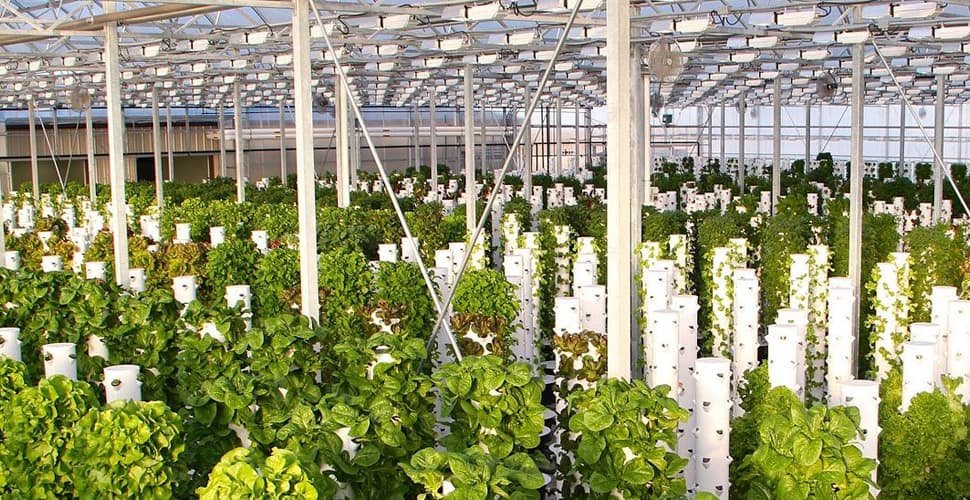
What is the Best Lighting for A Greenhouse?
To find the best grow lights for greenhouse, greenhouse growers should consider three factors: the type of plants, the time of year and how much sunlight is naturally available.
Growers have a variety of options. For those unfamiliar with the terminology or new to growing, it is critical to understand all the different lighting styles. Let’s take a look at their uses and advantages.
Hight Pressure Sodium Grow Light (HPS Grow Light)
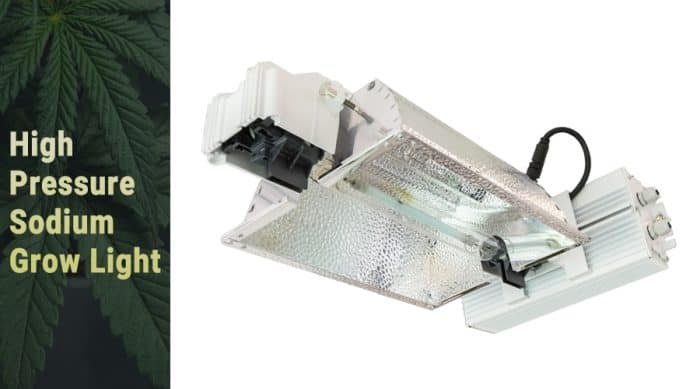
The high-pressure sodium greenhouse lamp emits more amber-orange and redder spectrum light. Bright, intense light has a positive impact on promoting plant germination and flowering. It works best when used late in the plant growth cycle. It is approximately seven times more efficient than incandescent light and works well when used in natural daylight.
Remember to preheat HPS lamps for 4 to 5 minutes and cool them for 1 minute. They are not suitable for greenhouses where the lights are turned on and off frequently. It is also important to note that HPS lamps should be installed 30 to 36 inches above the plants for best results.
- Provides a good spectrum of light proven to be suitable for plants.
- HPS lamps are not suitable for greenhouses where lights are frequently switched on and off.
- A cheaper alternative than other options on the market.
- Provides extra heat, which is beneficial in the winter.
- Its size is smaller than LPS light or fluorescent lamps.
- Energy-efficient and low-cost.
LED Greenhouse Grow Lights
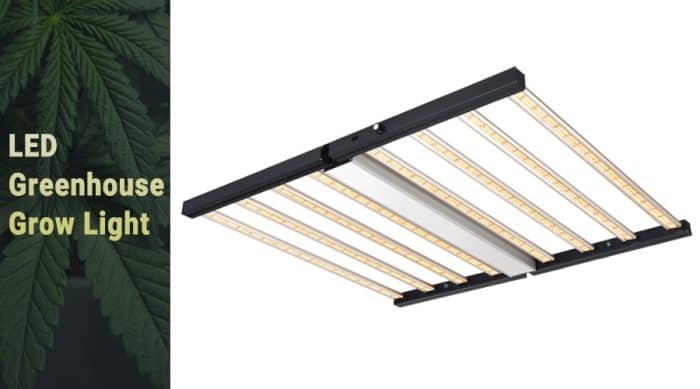
LEDs are no longer new, they are the most enduring and ideal choice. They are more efficient than other plant lights because more of the energy input goes to light rather than heat.
The top 7 benefits of LED supplemental greenhouse lighting are as followed.
- Fixtures can be placed close to plants to increase efficiency and speed up the plant harvest cycle.
- Extend daylight hours without losing sunrise and sunset effects.
- LEDs consume 30% less energy than fluorescent lights, reducing overall energy use by up to 75%.
- Variable spectrum control with flexible light adjustment to provide optimal light for plants
- LEDs last longer than traditional bulbs and are less costly to maintain.
- Enjoy consistent light quality year-round.
- Greenhouse lighting fixtures designed specifically are typically IP65 waterproof rated.
Metal Halide Grow Light (MH Grow Light)
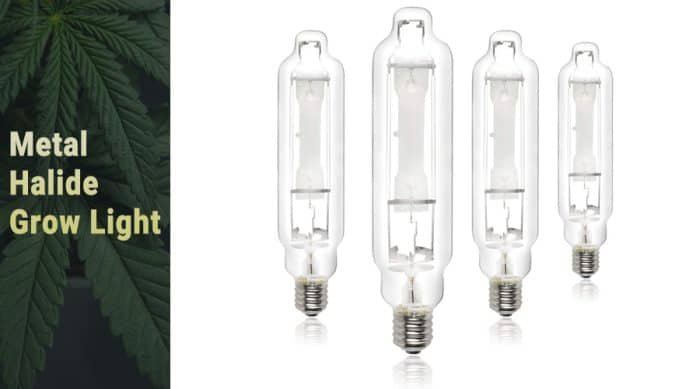
Metal halide lamps are used because they emit blue light, but appear bright white to our human eyes. Traditionally, indoor growers use metal halide lights during the nutrient phase of plant growth. It is ideal for the flowering and fruit production stages because they mimic the seasonal sunlight of spring and early summer.
As with HPS lamps, preheating is required. Metal halide lamps need to warm up for 5 minutes and then cool down for 5 to 10 minutes before they can be restarted. Ceramic metal halide lamps, like HPS, need to be hung 30 to 36 inches above the plants to get the desired effect.
- The average life span of 8,000 to 15,000 hours.
- MH lamps are 3 to 5 times more efficient than incandescent bulbs.
- Need to rotate lamps for even plant growth.
- MH lamps are not suitable for greenhouses where lights are frequently turned off and on.
T5 Fluorescent Tubes

T5 is ideal for growing in greenhouses, hydroponics, warehouses and barns. And it is perfect for the seedling stage of plants to ensure even growth.
The tube shape of the lamp is denoted as “T” and the number 5 indicates its diameter. These lamps are thin, only 5/8″ in diameter, which makes these fluorescent tubes more efficient and popular than standard fluorescent lamps.
- The T5 lamp uses less energy and can last up to 50,000 hours.
- It has a very high lumen output with extremely low heat output.
- It is equipped with an aluminum reflector for maximum efficiency.
- T5 does not have much light distribution and is not suitable for larger areas.
- Fluorescent lamps cannot penetrate deep into the plant canopy to stimulate flowering and fruiting plants.
Greenhouse Lighting Requirements
Greenhouses need at least 6 hours of direct sunlight a day. To make the most of the sunlight in your greenhouse from east to west, keep the windows clean and remove dust regularly, the greenhouse can increase the light intensity by 10%.
Rather than talking about the greenhouse lighting requirements, it is important to understand the daily light needs of your plants. Plants are photoperiodic. Meaning, they need a certain amount of sunlight from the time they vegetate to the flowering or fruiting stage. Long daylight plants need more than 12 hours to bloom, short daylight plants require a short amount of daylight, and some plants are neutral to daylight.

Things to Remember for Any Lighting Setup
Choose the Right Spectrum
All plants need PAR light (photosynthetically active radiation) in the wavelength range of 400 to 700 nm.
Check Light Level Requirements
Supplemental light levels need only be a fraction of the full light level, and photoperiodic light levels can be even lower. You need tools that can accurately measure the natural light level in your greenhouse as well as the light level produced by supplemental lighting.
Check the Shaded Areas of the Fixtures
The LED supplemental greenhouse lighting casts a shadow. You need to make sure that critical areas are not blocking natural light. This is a worthwhile topic for you to discuss with your lighting designer when planning your layout.
Luminaire Efficiency
Energy costs are the second largest expense in a greenhouse, and crop lighting can take up a large portion of overall operating costs. You will need to weigh the initial upfront investment against the potential return.
Power Requirements
Whether your greenhouse has the electrical configuration needed to power greenhouse lighting fixtures, your wiring, breaker box and service amplifiers are all factors that should be considered.
Summing Up
Greenhouse lighting fixtures are important to help plants thrive in the greenhouse. There are many options available to meet the needs of different plant types and growth stages.
This is why, as a gardener, you need to do some research on the initial cost of setting up lights, the types of plants you have, their needs, and the size of your greenhouse. You should choose the right plant light for your business development based on your actual for-real concrete needs.
Jayes
As a Digital Marketing Manager at AUXGROW, Jayes combines a passion for hydroponic systems and expertise in LED grow lights. With hands-on experience and a deep understanding, Jayes guides you through the world of sustainable cultivation.

